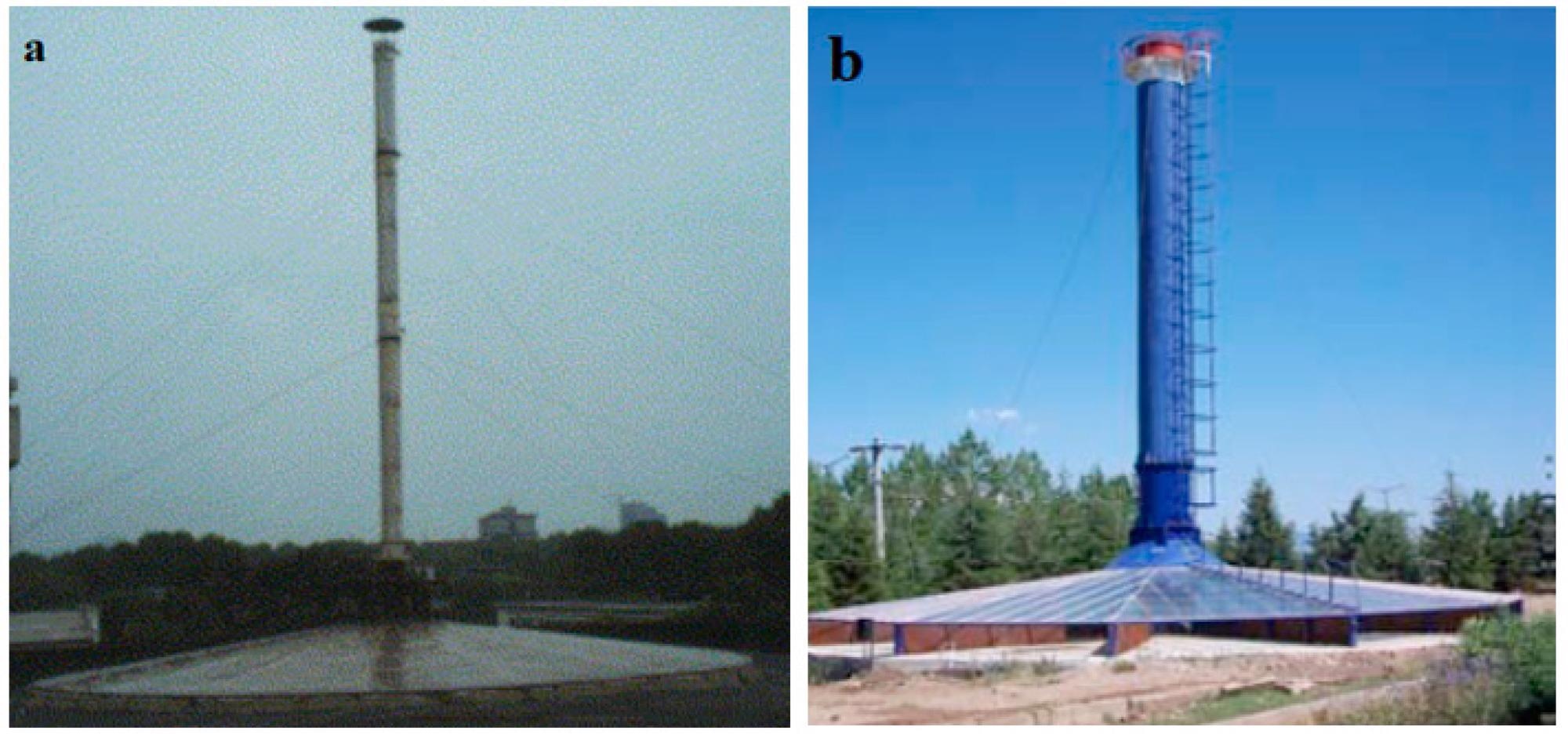Amongst the various proposed renewable energy technologies, solar power is one of the most attractive for large-scale worldwide implementation. Solar chimney power plants are a recent innovation in renewable energy harvesting and are the focus of a new paper published in Sustainability.

Study: Solar Chimney Power Plants: A Review of the Concepts, Designs and Performances. Image Credit: Ed Connor/Shutterstock.com
Breaking Away from Fossil Fuels
Rapid population growth, urbanization, and industrialization have led to an exponential growth in the world’s energy consumption. The primary source of electricity for a sizeable proportion of the world’s population is still fossil fuels, and this has led to a massive increase in greenhouse gas emissions, causing environmental damage. In the decade between 2008 and 2018, global CO2 emissions increased by more than 10%.
Another pressing issue with fossil fuels is their resource scarcity. As they are non-renewable, at some point they will simply run out. This is causing the existential threat of an energy crisis, and if something is not done, the wheels of progress may literally come grinding to a halt. In response to these threats, world governments have committed to trying to achieve a net-zero carbon economy by 2050, with additional pledges to drastically reduce emissions by 2030.
The way forward will require significant investment in renewable energy infrastructure. Renewable sources include wind, hydroelectric, biomass, geothermal energy, and solar power. Of these, solar power has become a popular source due to the global, inexhaustible, and year-round availability of energy from the sun.
Different Types of Solar Energy Harvesting Technologies
The two main types of solar power harvesting technologies are thermodynamic and photovoltaic systems. In a thermodynamic system, solar radiation is converted into heat energy which is then transferred into various materials. Photovoltaic systems convert solar energy into electricity directly using photovoltaic cells and semiconductor materials.
Several technologies have been developed to utilize thermal energy from solar sources. These include solar ponds, solar air conditioning, solar cookers, solar dryers, solar devices for water purification and distillation, solar power plants, and solar chimneys. There has been a significant research focus in this area with several studies performed over the past few decades. Some of these solar thermal technologies use heat energy directly, whilst some utilize various mechanisms to generate electricity.

Image Credit: (a) PVC chimney and (b) a steel chimney. Cuce, E et al., Sustainability
Utilizing Solar Energy to Generate Electricity with Solar Chimneys
Of these technologies, solar chimneys use solar energy to generate electricity according to fundamental physical laws. Solar chimneys differ from other solar energy technologies by utilizing thermal and momentum effects to achieve 24-hour electricity generation. However, the design and operation of these power plants are influenced by a range of factors such as environmental conditions and operational, design, and geometric parameters.
Solar chimneys are based upon the upward buoyancy of fluids. Their buoyancy depends on their movement and density differences, which are dependent on the pressure differences. The system’s collector is semi-permeable, which transfers the solar radiation harvested by the collector. Solar radiation reaches the ground, starts the mechanism, and heats the air under the collector. The decreased density causes the air to move upwards towards the collector.
The temperature difference on the ground exerts upward buoyancy on the air under the collector in the system. The air is forced toward the only place it can move, which is at the center of the collector. A long chimney is placed vertically at the center of the collector creates a vacuum effect due to the pressure difference at its entrance and exit.
These effects combine to cause an increase in the kinetic energy of the air in the system, and the temperature and speed of the air increase. At a certain height in the chimney, a turbine is installed. The air moving over the turbine blades generates electricity.
The Study
These solar power plants are the focus of a new paper published online in Sustainability. The paper has investigated the history and theoretical emergence of solar chimneys and the authors have set out to provide a comprehensive review of several aspects of the technology.
These aspects are the main elements, structure, and operating mechanisms of the solar chimney power plants. In addition to exploring the fundamental principles of these renewable power plants, the authors have investigated numerical and experimental studies. Existing technologies have been considered to identify any knowledge gaps which will inform better future designs.
Unlike other contemporary publications, the review published in Sustainability has evaluated the effect of geometric parameters on the technology by comparing current studies. Theoretical, CFD, and mathematical studies have been evaluated separately for different sized designs to aid the study’s comparisons. The authors have stated that the study gives readers the opportunity to compare both the studies and the numerical data together.
Further Reading
Cuce, E et al. (2022) Solar Chimney Power Plants: A Review of the Concepts, Designs and Performances [online] Sustainability 14(3) 1450 | mdpi.com. Available at: https://www.mdpi.com/2071-1050/14/3/1450
Disclaimer: The views expressed here are those of the author expressed in their private capacity and do not necessarily represent the views of AZoM.com Limited T/A AZoNetwork the owner and operator of this website. This disclaimer forms part of the Terms and conditions of use of this website.